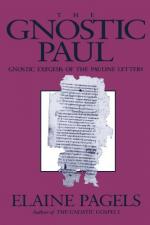|
This section contains 1,722 words (approx. 6 pages at 300 words per page) |

|
SOURCE: "The Christians Who Lost Out," in The New York Times Book Review, Vol. 85, January 20, 1980, pp. 3, 33.
Below, Brown offers a negative assessment of The Gnostic Gospels.
Some 30 years ago, there were two discoveries in the Middle East that have great, even if indirect significance for our knowledge of early Christianity. In 1945, Coptic codices (books) were found at Nag Hammadi, near the Nile, about 300 miles south of Cairo; in 1947, scrolls, mostly Hebrew and Aramaic, were found at Qumran, near the Dead Sea.
These parallel discoveries reflect curiously parallel histories. The Egyptian codices, in fourth-century A.D. script, contain 52 works translated from earlier Greek texts, many of them composed by Christian gnostic sectarians. They contain views of Jesus and God that were condemned by the Fathers of the emerging Catholic Church. Weeded from the library of a nearby monastery, the codices were buried in a jar, probably to prevent their...
|
This section contains 1,722 words (approx. 6 pages at 300 words per page) |

|


